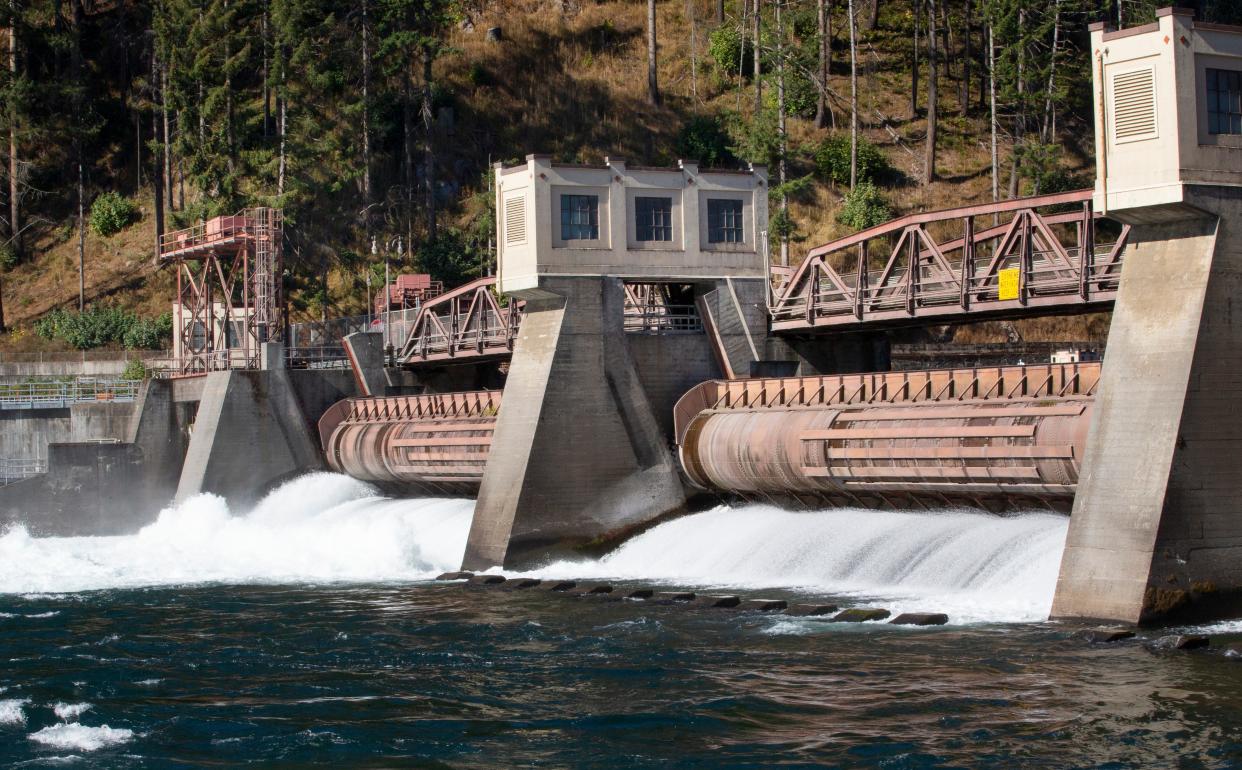EWEB officials support decommissioning of Leaburg hydropower project, dam removal

Eugene Water and Electric Board staff are putting together an action plan for decommissioning the Leaburg hydropower project after utility officials endorsed the plan.
The utility's board of commissioners on Tuesday unanimously approved documents directing staff to develop an action plan for decommissioning the 100-year-old hydropower project, with the future option of fully shutting down the project and its canal along the McKenzie River.
The canal hasn’t generated power since 2018 because of concerns about structural deficiencies, and EWEB can’t leave it as is due to federal requirements.
Frank Lawson, who heads EWEB as general manager, told officials that staff will deliver the plan setting out milestones by the end of the year. He stressed the vote doesn't mean things are set in stone and if there's new information the utility has "the humility to take a step back and look at this in a new light."
Officials described the plan as the best step forward but a difficult one to reach.
"This is not an easy decision," said Commissioner Matt McRae, who represents Eugene Wards 1 and 8 on the board. "This is an extremely complex project with dozens of moving parts, and the options that we’ve been considered have wildly different impacts on the utility, on residents, on ratepayers and on the river."
Staff have spent years analyzing what to do with the hydropower project, and officials have had nearly two dozens meetings about it.
McRae said moving toward decommissioning is the right choice mostly because of "the immense unknowns and economic risks the utility faces if we move to repair the project and resume operation."
Decommissioning the project likely will drive the removal of the dam and development of alternative access across the river, Lawson said. Work isn't expected to start until the 2030s.
"The record of decision and the resolution does not mean the wrecking balls come out next week," he said. "This is going to be a long process, a very regulatory-driven process as well."
Environmental groups such as Cascadia Wildlands, a Eugene-based nonprofit conservation organization, have consistently supported decommissioning the project and removing the dam to benefit "imperiled species and other wildlife that rely" on the river.
“These species need cool, clear water to survive, especially as the impacts of the climate emergency exacerbate the many stresses they face," said Grace Brahler, the organization's wildlands director, in a statement. "We urge EWEB to develop a strong plan to restore the river to pre-project conditions as expeditiously as feasible.”
About the project
EWEB began constructing the Leaburg Canal in 1928 in response to a growing demand for electricity.
The Leaburg Dam, which created Leaburg Lake, also is a bridge and lets biologists separate hatchery fish from wild fish to prevent genetic mixing in upriver spawning grounds. The lake also provides water to the Leaburg Hatchery.
When operational, the hydroelectric project can generate up to 15.9 megawatts as the dam diverts up to 19,000 gallons of water a second down the five-mile Leaburg Canal to the powerhouse, spinning turbines that generate electricity.
They once generated enough power for 13,000 single-family homes, about 4% of EWEB’s average annual electricity needs.
Seepage and soil testing that showed the canal’s banks can’t handle earthquakes led EWEB to shut down the project in 2018.
Today, the canal conveys only stormwater and tributaries, intercepting several creeks from the north side of the valley that end up in the McKenzie.
Recommendation came from four options
EWEB staff and officials have been studying the financial, environmental and social implications of making repairs to the canal.
Staff prepared four possible futures for the Leaburg Canal and before recommending a partial decommission with the option for a full shutdown in the future.
The initial recommendation had six parts:
Permanently discontinuing electricity generation.
Removing Leaburg Dam.
Developing southern access.
Repairing the canal for stream and stormwater conveyance, and preserving the option to naturalize.
Mitigating opportunities.
Conducting similar assessment for the Walterville project, which is still generating power. Relicensing for the Walterville project will start around 2030.
Staff added a seventh recommendation during Tuesday's presentation: Identifying opportunities and requirements for board review, guidance and direction.
"We do feel, because of the timelines here, that it’s really important to capture in the action plan the details on which future boards can provide oversight, milestones, opportunities to provide guidance and, potentially, redirection if necessary," Lawson said.
What's next?
Staff plan to bring an action plan to the board by the end of 2023. If that get approval, they then would work on a decommissioning plan that would take a few more years to complete.
People may see some work to address short-term safety risks, staff said, but major construction wouldn’t start until the early- or mid-2030s.
Utility officials will get at least quarterly updates on the project and work toward decommissioning.
Learn more about the project and conversations about its future at eweb.org/about-us/power-supply/mckenzie-river-hydro-projects/future-of-the-leaburg-canal.
Contact city government watchdog Megan Banta at mbanta@registerguard.com. Follow her on Twitter @MeganBanta_1.
This article originally appeared on Register-Guard: EWEB officials support decommissioning of Leaburg hydropower project

